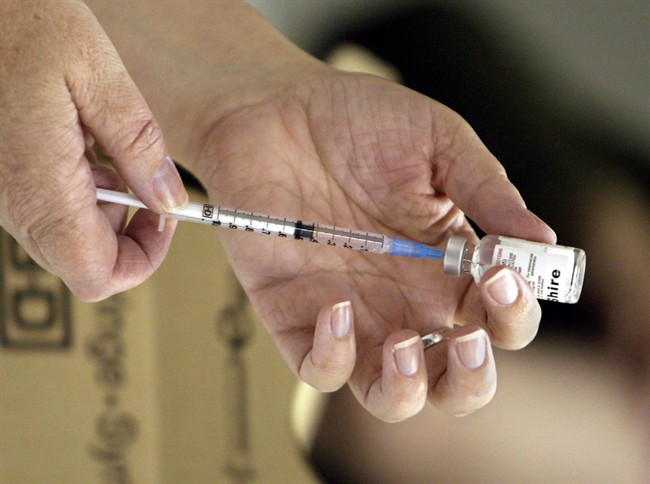TORONTO – This year’s flu vaccine did little to protect against the season’s nasty H3N2 virus in North America. It did even worse in Europe, a new study suggests.

The mismatch meant that the shot only protected about three per cent of those who got vaccinated, according to British health officials.
In North America, efficacy sat at about 23 per cent – among one of the worst results recorded since doctors began tracking how well the vaccines work. Ideally, the best flu vaccines are 50 to 60 per cent effective.
READ MORE: Flu vaccine only 23 per cent effective this season, CDC says
“It’s not possible to fully predict the strains that will circulate in any given season, and there is always a risk of a drift occurring as we have seen this year. However, it’s important to be aware that this does not occur every season,” Dr. Richard Pebody, Public Health England’s head of flu surveillance, said in a statement.
“Throughout the last decade, there has generally been a good match between the strains of flu in the vaccine and those that subsequently circulate, so it’s crucial that these results do not discourage people in at-risk groups from having flu vaccination now or in the future,” Pebody said.
The British findings come from the results of 1,314 patients who were vaccinated. The U.S. Centers for Disease Control and Prevention’s study was based on 2,300 people in five states who got sick, while Canadian findings zeroed in on data from B.C., Alberta, Ontario and Quebec.
READ MORE: Flu vaccine offered little or no protection in Canada this year
The Canadian findings suggest that the vaccine led to “no protection.”
Western countries, more or less, use the same vaccine – there are only miniscule variations by product and manufacturer.
H3N2 was this year’s flu season culprit – health officials anticipated an H3N2 strain but it drifted and didn’t match what was in the vaccine.
Each year, strains of the influenzas mutate and re-emerge, infecting victims and triggering a new season. Those of us in the northern hemisphere keep a watchful eye over the flu in the southern hemisphere, which affects residents during their winter (or our summer).
READ MORE: Nasty flu season strikes as H3N2 cases spike across Canada
Scientists look at the patterns and make their predictions based on what viruses made their rounds below us and estimate what mutations could occur before the influenzas make their way over the equator.
Picking out three strains for a vaccine is guesswork, and by the time influenza makes its way into the northern hemisphere, it’s had time to mutate or “drift.” But by then, the flu vaccine is already formulated.
Read more about who should be vaccinated here.
Read the CDC report here. Read the Eurosurveillance report here.
carmen.chai@globalnews.ca
Follow @Carmen_Chai




Comments